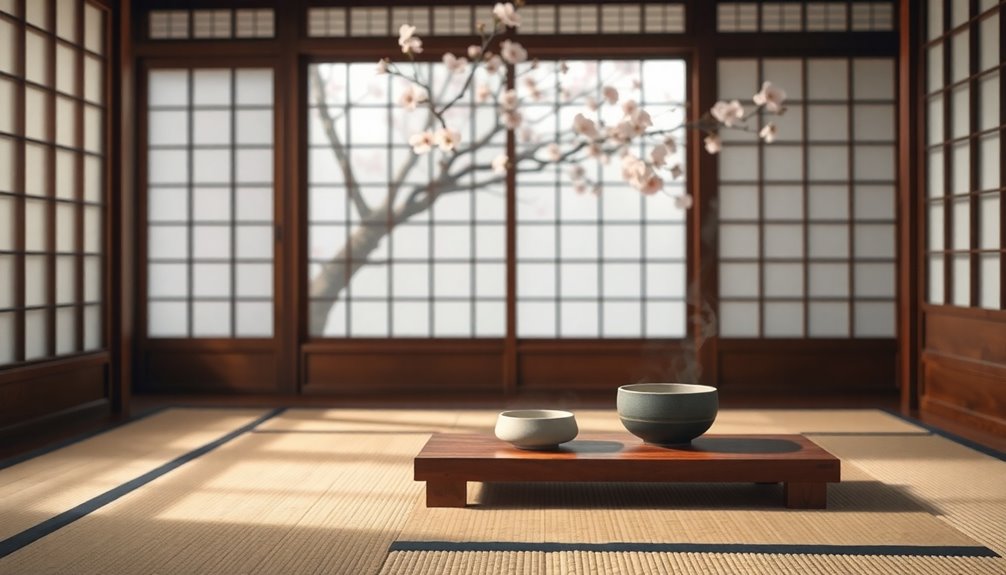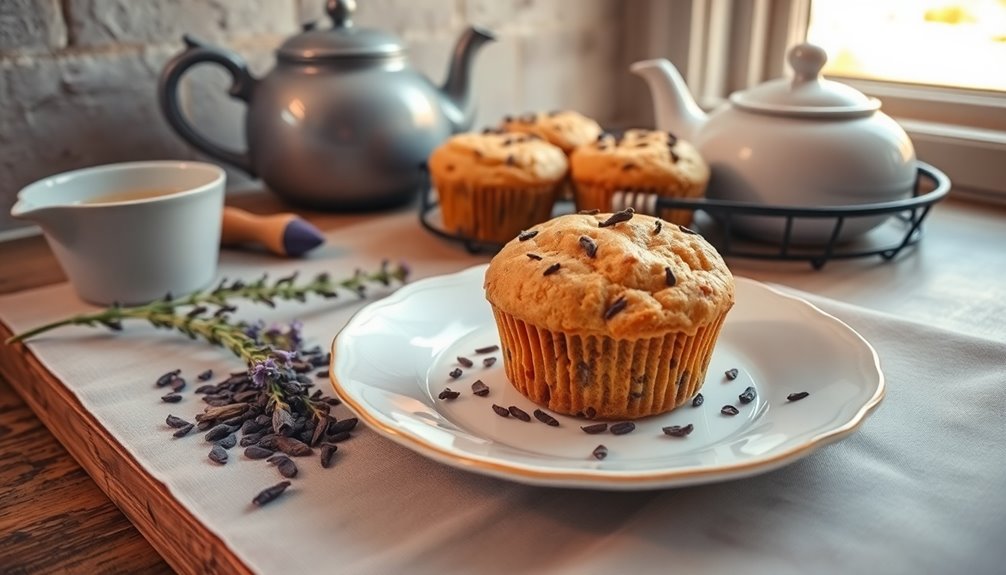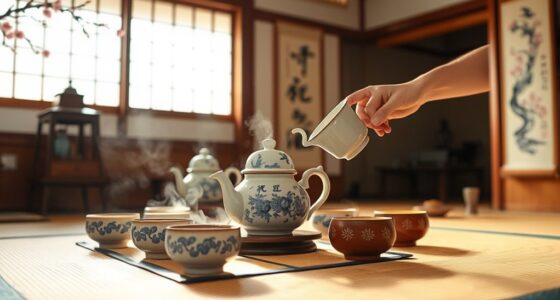Tea culture shapes Japanese Zen practices in many wonderful ways! It combines tradition, mindfulness, and community that can truly warm your heart. Here are some key points:
- It emphasizes being present through the art of tea ceremonies.
- Sharing tea fosters connections among people from all backgrounds.
- The beauty of simplicity is highlighted by wabi-sabi, which helps us appreciate life's little imperfections.
- Every sip encourages mindfulness and community spirit.
Isn't that delightful? Learning about these aspects not only brings joy but also helps you understand the deeper meanings behind tea in Japanese culture. There's so much more to explore!
Key Takeaways
- The tea ceremony, or sadō, embodies Zen principles through its ritualistic practices, promoting meditation and mindfulness during preparation and consumption.
- Wabi-sabi philosophy enhances tea culture by encouraging appreciation for simplicity and the beauty of imperfection, reflecting core Zen beliefs.
- Each step in the tea-making process serves as a form of moving meditation, reinforcing focus and mental clarity integral to Zen practices.
- The concept of Ichigo Ichie highlights the importance of cherishing unique moments, fostering a deeper connection to the present in Zen traditions.
- Tea culture's communal aspect strengthens relationships and community ties, aligning with Zen's emphasis on interconnectedness and mutual respect.
Introduction
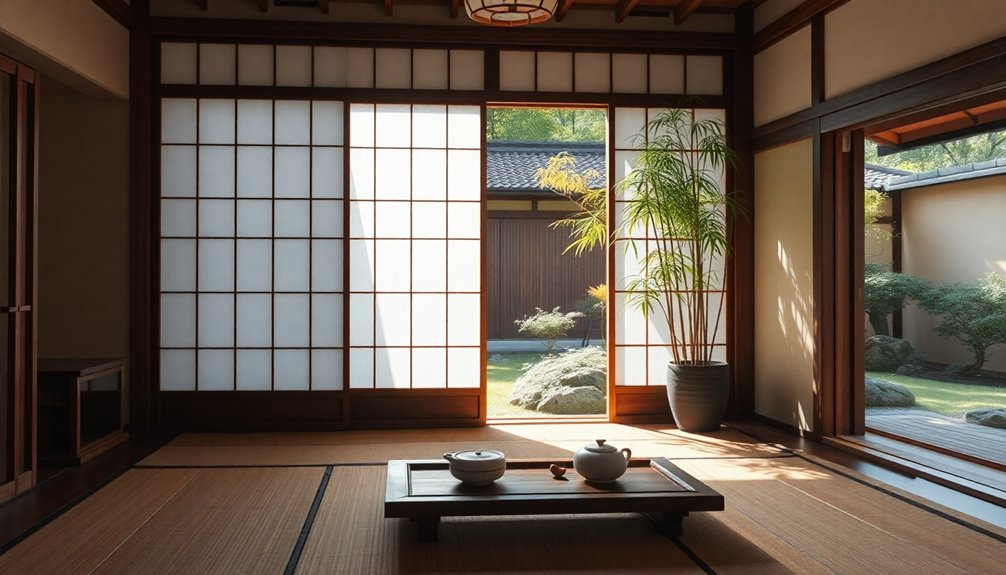
Japanese tea culture is a fascinating blend of tradition and mindfulness, deeply intertwined with Zen Buddhism. When you think of tea, you might picture cozy moments filled with warmth and laughter. In Japan, the Japanese tea ceremony, or sadō, is more than just sipping tea; it's an art of tea that embraces Zen principles, making it a special spiritual practice.
The history of tea in Japan began with monk Eisai, who introduced this delightful drink in the late 12th century. He believed tea helped with meditation and focus, which is why it became essential in monastic life.
During the tea ceremony, you'll notice the beauty in simplicity, known as wabi-sabi, which celebrates the imperfect and the natural.
As you enjoy each cup, remember the concept of Ichigo Ichie, meaning "one time, one meeting." This reminds you to cherish every moment spent with friends and family.
The careful use of tea utensils adds to the experience, making each gathering feel magical. So, gather around, share some tea, and let the joy of Japanese culture fill your hearts!
Tea's Role in Mindfulness
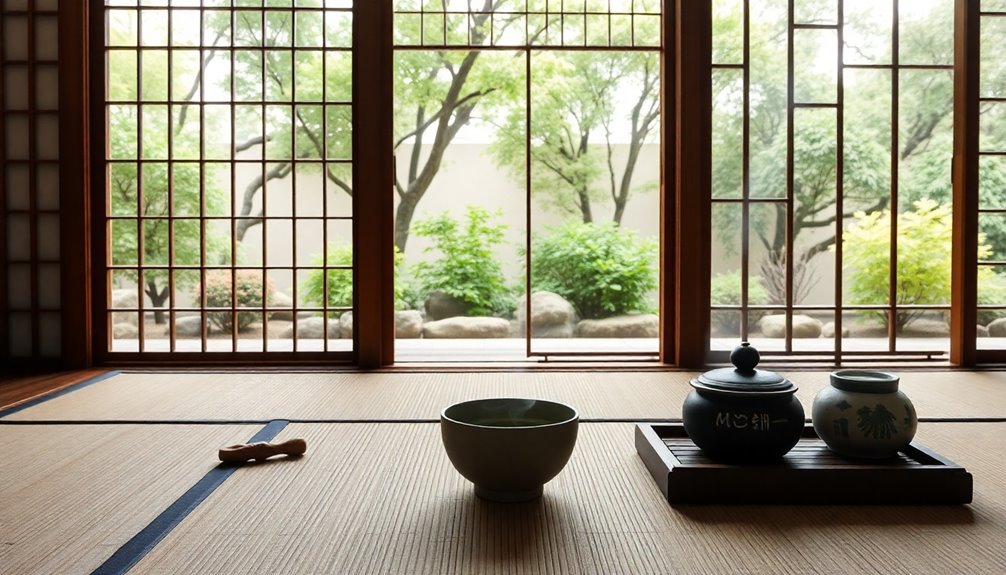
Mindfulness permeates every aspect of the Japanese tea ceremony, transforming the act of preparing and enjoying tea into a profound spiritual experience.
When you participate in these ceremonies, you're not just sipping tea; you're engaging in a beautiful moment of mindfulness. Each step of tea preparation focuses on Zen principles like mental clarity and the uniqueness of each moment, known as ichigo ichie.
Here are some key aspects that make tea ceremonies special:
- Ritualistic Aspects: You carefully handle each utensil and perform intentional movements, which helps you stay focused and present.
- Wabi-Sabi: This philosophy celebrates simplicity and imperfection, encouraging you to find beauty in life's fleeting moments.
- Moving Meditation: The act of making tea becomes a joyful practice that reinforces the importance of being present in everything you do.
Ceremony Fosters Community Connection
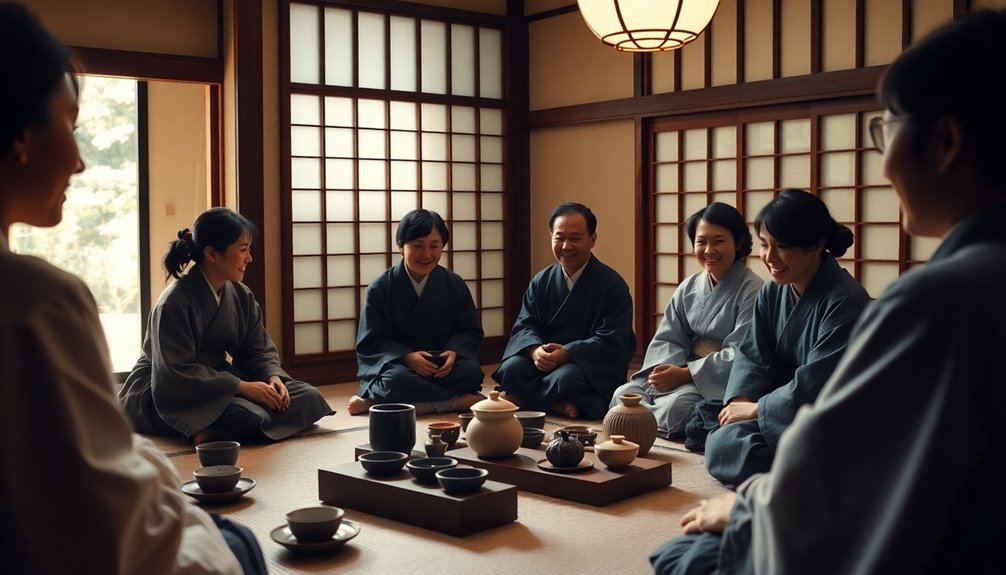
In the serene setting of a tea ceremony, the act of sharing tea becomes a powerful means of fostering community connection. Each tea gathering embraces the idea of *ichigo ichie*, or "one time, one meeting," reminding us that every moment is unique.
As participants enjoy *koicha*, the thick tea shared from the same bowl, they experience a delightful sense of unity and togetherness.
During the ceremony, mindful interaction takes center stage. You're not just sipping tea; you're engaging in a shared experience that deepens relationships and builds bonds. The careful preparation and presentation of tea create a warm atmosphere filled with mutual respect.
Here's what makes the tea ceremony special:
- Community: It brings people together, regardless of background.
- Connection: You feel the ties that bind everyone in the room.
- Artistry: The beauty of the tea preparation captivates everyone.
Every moment spent in this joyful celebration strengthens community ties, showing us how simple acts can create lasting friendships.
Tea's Influence on Aesthetics
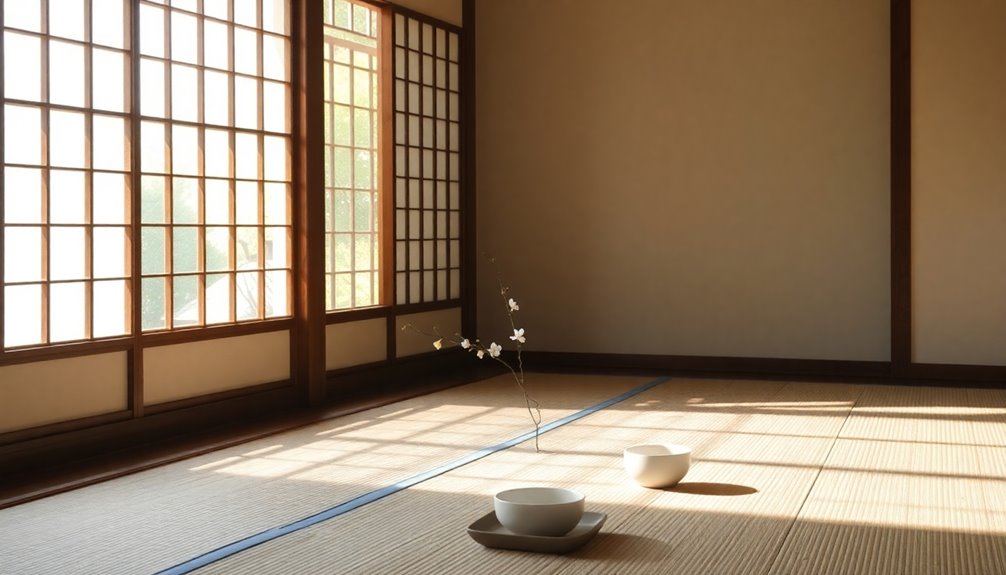
Tea culture profoundly influences aesthetics, intertwining beauty with simplicity and imperfection. In Japanese tea rooms, known as chashitsu, you'll notice the calming design that reflects Zen practices. These spaces use natural materials and minimal decor, focusing on tranquility and peace.
Here are some key elements that highlight this aesthetic:
- Wabi-sabi: This principle celebrates beauty in simplicity and imperfection. It teaches you to appreciate the unique flaws in objects.
- Nature's Cycles: Seasonal elements play a big role in tea ceremonies, showcasing the changing beauty of nature. You'll see different utensils and decorations throughout the year.
- Tatami Mats: These mats create a serene atmosphere and connect you to nature, enhancing your tea experience.
- Symbolism: Features like the low entrance (nijiriguchi) and the tokonoma (alcove) symbolize humility and the fleeting beauty of life.
Every aspect of tea culture emphasizes a spiritual connection to the transient nature of life.
Cultural Appropriation Debates
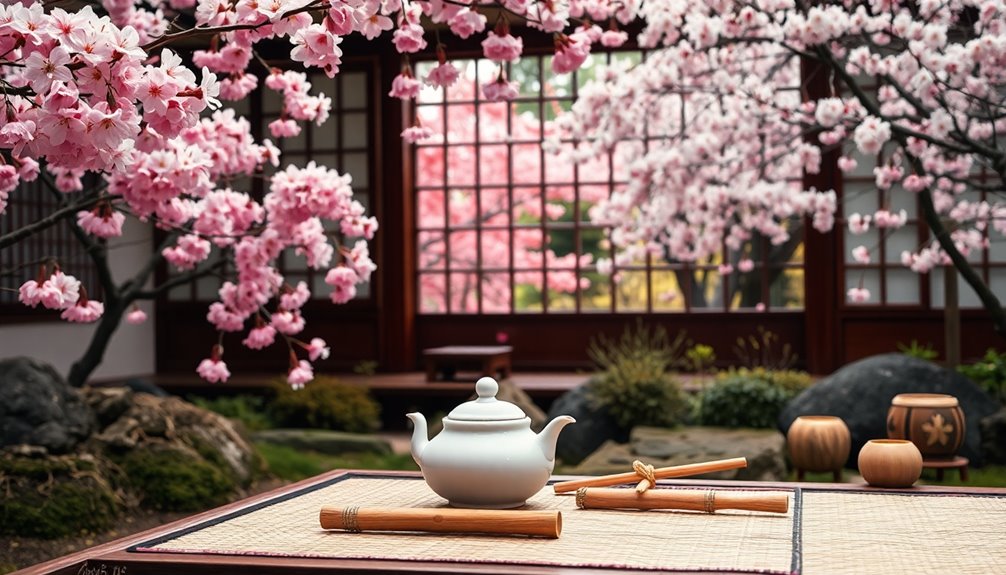
Cultural appropriation debates surrounding Japanese tea culture raise important questions about respect and authenticity.
When you think about the tea ceremony, it's not just about sipping tea; it's about mindfulness and the deep spiritual significance it holds in Zen practices.
However, as globalization spreads, some people worry about the commercialization of these traditional practices.
Here are some key points to consider:
- Misrepresentation: Simplified versions of the tea ceremony can misrepresent its historical roots and true essence.
- Dilution of Values: Commercializing the tea ceremony might dilute the mindfulness and respect that are essential to the experience.
- Cultural Sensitivity: Advocates urge everyone to learn about the authenticity and traditions before adapting these practices.
Practical Applications
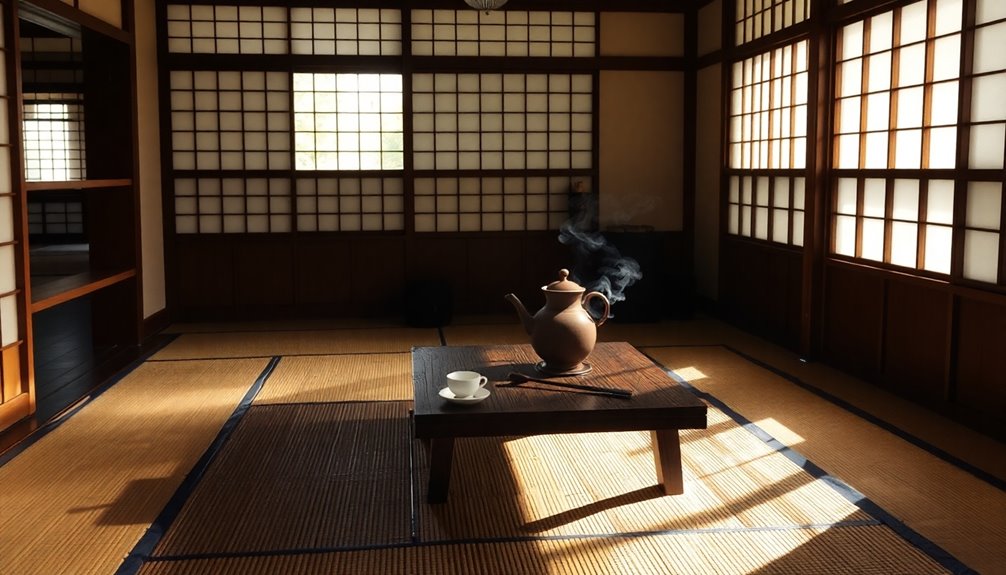
Experiencing the Japanese tea ceremony offers you a unique opportunity to practice mindfulness and cultivate a deeper awareness of the present moment.
The tea ceremony we know today is all about enjoying the process of tea preparation, where every step encourages you to be present. This aligns perfectly with Zen principles, helping you find mental clarity.
In the serene tea room, or chashitsu, you'll notice how the low entrance symbolizes humility, inviting you to reflect.
The beauty of Zen aesthetics shines through in the simple yet elegant tea utensils, embracing the art of wabi-sabi, which celebrates natural imperfections.
Here are some practical applications you can enjoy:
- Focus on Mindfulness: Pay attention to each moment during tea preparation, practicing Ichigo Ichie—"one time, one meeting."
- Shared Experience: Invite family and friends to share a cup of tea, deepening your connection with one another.
- Reflect and Relax: Use the calming atmosphere of the tea room to meditate and unwind. Additionally, preparing tea using traditional methods can enhance the overall experience and connection to the practice.
Frequently Asked Questions
How Is Zen Reflected in the Tea Ceremony?
Zen's reflected in the tea ceremony through mindfulness and presence. You engage fully, appreciating each moment's uniqueness. The rituals promote calmness and focus, allowing you to experience spiritual connection and the beauty of simplicity and imperfection.
What Is the Significance of Tea in Japanese Culture?
Tea's significance in Japanese culture lies in its role as a symbol of hospitality, mindfulness, and connection. It fosters social bonds, encourages appreciation for the moment, and reflects deep-rooted traditions that enrich daily life.
What Is the Way of Tea and Zen?
The Way of Tea, or sadō, blends tea preparation with Zen principles. You engage in mindfulness, appreciating beauty in simplicity while fostering presence. Each ceremony invites you to experience unique moments, cleansing both mind and spirit.
How Have the Principles of Zen Shaped Parts of Japanese Culture?
Zen principles shape Japanese culture by fostering simplicity, mindfulness, and appreciation for each moment. You'll find these ideals in art, architecture, and everyday interactions, encouraging you to embrace beauty in imperfection and transience.
Conclusion
In conclusion, tea culture in Japan is a delightful blend of mindfulness, community, and beauty. It invites everyone to slow down, connect with others, and appreciate the little things in life. By sharing a cup of tea, we can celebrate traditions and create joyful memories together. Whether you're enjoying a simple brew or participating in a formal tea ceremony, there's always something special about tea that brings us closer. So, let's raise our cups to tea and happiness!

